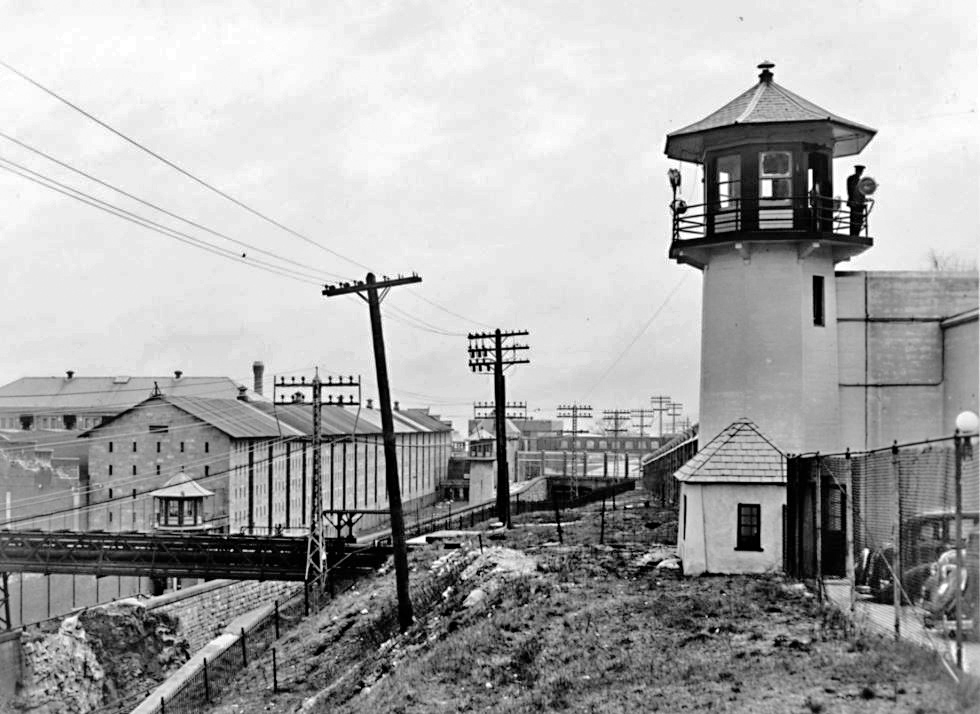More Rooms Like This
The door is heavy. I don’t remember if it is steel or wood, but it takes effort to open. We are a small group of four. A few more will join our group shortly. I lead the way inside. They said not to wear blue. I keep it simple — a black dress and gray pants that come just above my ankle. And black boots. My usual.
But I’ve gotten it slightly wrong. I am told by a female guard that my dress is cut too low. This takes me by surprise. I don’t have a habit of dressing to provoke. She asks me if I have a sweater to put over my dress. It’s eighty degrees outside, and I do not. I have the idea to turn my dress around backwards. She agrees that this could work. I hand over my license. Get the blue stamp. She sends me off to the bathroom to switch the dress around the wrong way. It works, and she approves my entrance to the prison.
For me, it’s a tough ascent. Not because there are steps to get to where Hudson Link has its classrooms. But because I have sworn that I would never enter a prison again. It’s just too painful to remember the humiliation of being judged by the guards for loving someone behind bars. And worse, it’s too painful to remember the sorrow at having to leave my husband behind when a visit was done.

Current chain-link fence crowned with barbed wire surrounding entrance to Sing Sing Correctional Facility in New York. Photo Jo Kreiter
But I have been invited into Sing Sing Correctional Facility by members of the board of the Sing Sing Prison Museum. And it matters to me to honor their invitation. Meet a few of the men who are on the inside. Their sentences are long in this maximum-security prison.
We assemble in an anteroom. We are now about ten visitors. Myself, Elise at my side as my New York support system, and several members of the Tiger Foundation. They are conducting their annual site visit to the Hudson Link program, which they fund. I am piggybacking onto their site visit at the invitation of Sean Pica, who directs the organization and also sits on the board of the Sing Sing Prison Museum. Sean spent sixteen years inside this prison. Now released, he runs its higher education program, called Hudson Link.
We talk a bit nervously among ourselves. We are hosted by Sammy and Joel, a couple of the program’s staff, both of whom were formerly incarcerated at Sing Sing. I couldn’t be more impressed by these two men. Having mastered the contradictory worlds of prison and after prison, they seem to carry within themselves a guarded hope for incarcerated men and justice.
We are flanked by a few corrections officers. “Ladies first,” they insist as we are led through the prison grounds. It’s some kind of safety protocol to put the women at the front of the line. I find it a bit ridiculous, but I go along, of course. A prison visit isn’t really the place to whip out one’s politics of expanding gender identities. We pass through skinny staircases and a cavernous outdoor space framed by sloped grass and stone walls. It’s a medieval kind of place. Stone, steel, and a gorgeous view of the Hudson River. It’s cold and haunting. It’s beautiful, in a majestic castle kind of way. But not beautiful to anyone who has to live behind its bars.
We arrive at the education wing. A wide corridor leads to a few rooms with computer banks and classrooms. We enter a room and sit in a circle, in desks likely donated from an old high school. The fan runs loud. Someone pulls the cord to turn it off. As visitors, we sit in every other desk. A minute later, we are joined by a dozen men in dim blue prison clothes. They are welcoming. Each one shakes my hand. Tells me his name. We all settle in.
One man moderates the discussion. He sits across the circle from me. In a Rasta beanie, he is draped in self-assurance and self-taught leadership. There are questions about gangs, choices, physical danger, and substance abuse inside the prison. One man tells the story of choosing college over lifting weights in the yard because he grows tired of having nothing interesting to tell his family when they call. He is the youngest man in the room. Maybe twenty-five or so. He killed his stepfather to stop him from repeatedly hitting his mother. His step siblings are now free to thrive on the outside, and he is in prison. But he is getting his degree.

An old cell block at Sing Sing Correctional Facility in New York. Photo C. M. Stieglitz; Wikimedia Commons
The man to my right, the tallest person in the room at seven feet or so, tells me of turning down a three-year plea deal, going to trial, and receiving a sentence of twenty-five to life. I have heard this kind of story a few times before. Our judicial system is nothing if not vindictive in the face of a challenge to its authority.
We sit together for the afternoon. Physically our hosts are tall. Energetically they are self-possessed. Like dancers, they claim every inch of their own physical space with self-knowledge. I know, from visiting my husband in federal prisons around the country over many years, that all prisoners are not like this. There is an exceptionalism in this room. A self-claimed internal freedom that no one can take away. Despite the locks. Despite stone walls. Despite the bars.
This is what education does. Not the education of the entitled, where Ivy Leagues and advanced degrees are a birthright, whether or not they are deserved. This is education as necessity. As journey toward something better, when the cramped cell in front of you is flooded with the absence of sovereignty. This is determining your own complex road, after mistakes or bad judgement or racism have gotten the better of you.
Sitting in this room, I fall in love. I am enchanted by the collective will I see in front of me — the will to harness what is useful in your own humanity, to leave bitterness behind, and to make something new happen. Something good. I applaud the visionaries here. I applaud the day-by-day tedious study. I dream of more rooms like this, and fewer prisons.
Jo Kreiter is a San Francisco–based choreographer and site artist. Her tools include community collaboration, a masterful use of place, an intersectional feminist lens, and a body-based push against the constraints of gravity. Recent awards include a Rauschenberg Artist as Activist Fellowship and a National Dance Project Creation Grant. From 2017 to 2021, she is creating the Decarceration Trilogy: Dismantling the Prison Industrial Complex One Dance at a Time.
